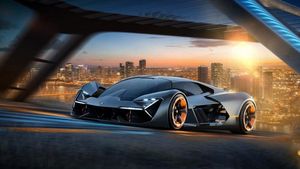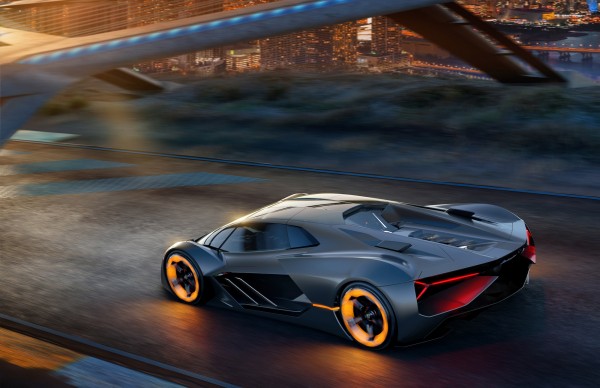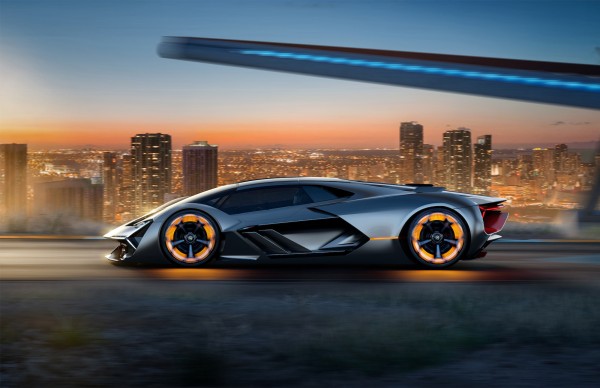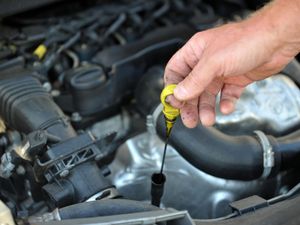The Lamborghini Terzo Millennio is a 'self-healing' electric supercar concept
Italian manufacturer teamed up with MIT labs to design performance car of the future

This is the Terzo Millennio, the result of a collaboration between Lamborghini and the Massachusetts Institute of Technology.
The concept car “imagines design and technology theories of tomorrow”, with a focus on next-generation all-electric propulsion and the use of innovative materials in vehicle construction.

Unlike traditional electric vehicles, the “Third Millennium” uses supercapacitor technology to store energy. The advantages of this are the high power potential and a long life-cycle compared with typical batteries – the challenge the engineers have to overcome is creating supercapacitors with comparable energy density.
Propulsion comes from four electric motors, one on each wheel, to maintain Lamborghini’s commitment to four-wheel-drive. It also gives designers and aerodynamicists more freedom as there’s no bulky engine to work around. It calls this the “first steps” towards an electric Lamborghini production car.
Perhaps the most sci-fi-like feature is the ‘self-healing’ bodywork. Lamborghini says it is looking at technology that can monitor the carbon-fibre structure, spot cracks if they appear, and release “healing chemistries” to repair the damage before it spreads. This allows it to use the lightweight construction in high-stress parts of the car to reduce weight.
Stefano Domenicali, chairman and CEO of Lamborghini, said: “Collaborating with MIT for our research and development department is an exceptional opportunity to do what Lamborghini has always been very good at: Rewriting the rules on super sports cars.

“Now we are presenting an exciting and progressive concept car. We are inspired by embracing what is impossible today to craft the realities of tomorrow: Lamborghini must always create the dreams of the next generation.”
The Italian supercar manufacturer’s collaboration with MIT was signed last year, and sees Lamborghini staff working with the Dinca Research Lab and the Mechanosynthesis Group on “radical innovation” of future car technologies.





